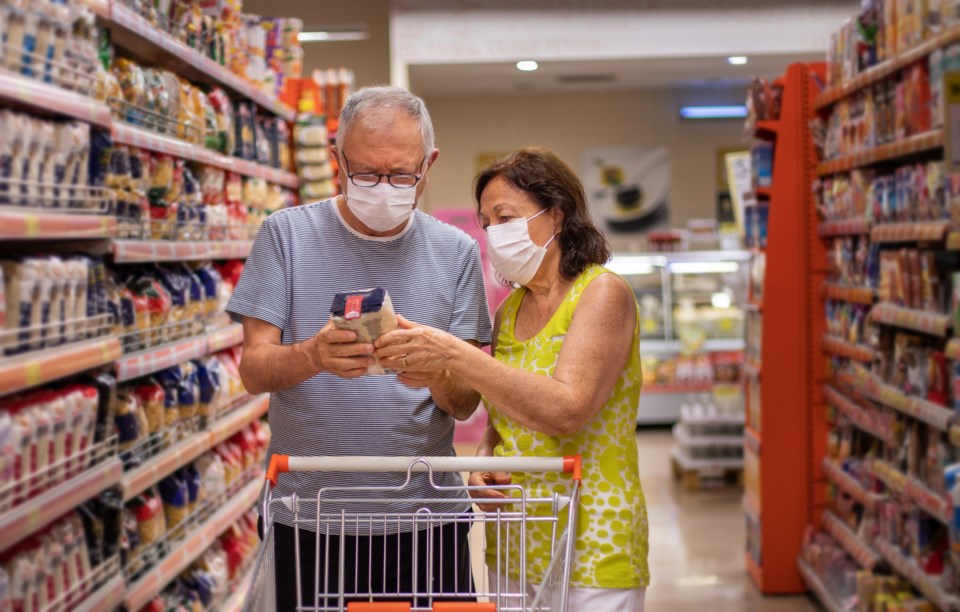Another 18 British Columbians lost their lives to COVID-19 in the past three days, raising the province's death toll from the pandemic to 1,940.
The last time the province announced more new COVID-19 deaths at one time was on May 10, when 20 such deaths were made public.
The province did not immediately provide an age breakdown for the deaths, or give a sense of how many of the deaths were in hospital intensive care units (ICUs), or in the 21 active outbreaks at seniors' homes and other healthcare facilities.
It did note that the deaths were spread across all five of B.C.'s health regions.
The deaths included:
• three in the Fraser Health region;
• five in the Interior Health region;
• three in the Island Health region;
• six in the Vancouver Coastal Health region; and
• one in the Northern Health region.
There are now 141 COVID-19 patients fighting for their lives in B.C. ICUs, which is eight fewer than on Friday. The total number of COVID-19 patients in any hospital ward in B.C. fell by 16 in the past three days, to 303.
Those numbers for ICU patients and total hospitalizations only include individuals that the province deems infectious. It does not include so-called long-haulers, who are people who have had COVID-19 and have lingering side effects that require hospitalization.
Last week, the province said 152 people were in hospital with lingering effects from COVID-19 in addition to those deemed infectious. This is important because it shows the broader impact of the COVID-19 pandemic on hospital capacity.
New cases continue to rack up, with 876 new cases on September 25 – the highest one-day number of new infections since the 1,001 cases identified on April 23. The three-day total of 2,239 new cases also includes 657 new cases on September 26 and 706 infections in the last 24 hours.
The government added a proviso to its latest numbers of new infections, saying that they were "provisional" due to what it called a "delayed data refresh," and could be revised as more data arrives.
More than 95.4%, or 176,354 of the 184,780 infected people so far identified in B.C., are deemed by the province to have recovered because they have gone 10 days after first feeling symptoms, and are therefore not thought to be infectious.
Unvaccinated people continue to be the ones driving COVID-19 infections.
No new data on unvaccinated people was released today, but on September 24, the government noted that, after factoring for age, people not vaccinated against COVID-19 were 25.9 times more likely to be hospitalized than those fully vaccinated.
Of the 436 hospitalizations in the two weeks ended September 22, there were:
• 322 not vaccinated (73.9%);
• 35 partially vaccinated (8%); and
• 79 fully vaccinated (18.1%).
The 4,543 cases in the week ended September 22 included:
• 3,057 (67.3%) unvaccinated;
• 351 (7.7%) partially vaccinated; and
• 1,135 (25%) fully vaccinated.
New vaccinations have slowed, as the vast majority of British Columbians are already fully vaccinated.
Health officials provided 31,173 doses of vaccine to British Columbians in the past three days, with 11,121 of those being to unvaccinated individuals, and 20,052 going to those needing second doses. No data was available for any third doses, which have started to be administered to those who are considered extremely vulnerable, and immunocompromised.
Of the 4,064,859 B.C. residents who have received one dose of vaccine since mid-December, 2020, more than 91.7%, or 3,729,606, are fully vaccinated, with two doses.
The B.C. government estimated in July that the province's total population is 5,147,712, so Glacier Media's calculation is that more than 78.9% of B.C.'s total population has had at least one dose of vaccine, and more than 72.4% of the province's total population has had two doses.
The province estimates that 87.7% of eligible British Columbians, older than 12 years, have had at least one dose of vaccine, with 80.5% of that population considered fully vaccinated with two doses.
The hardest hit region for new and active infections, on a per capita basis, remains Northern Health.
Glacier Media's math shows the number of new infections per health region, for each 10,000 residents (with total new cases in brackets) is:
• 4.8 in Fraser Health (857);
• 2 in Vancouver Coastal Health (256);
• 7.1 in Interior Health (525);
• 11.9 in Northern Health (358); and
• 2.7 in Island Health (230).
There were 13 new infections in people who normally do not reside in B.C.
The result by health region for the 6,098 people fighting active infections for each 10,000 residents (with total new cases in brackets) is:
• 12.3 in Fraser Health (2,218);
• 6.7 in Vancouver Coastal Health (843);
• 15.6 in Interior Health (1,159);
• 38.8 in Northern Health (1,165); and
• 7.7 in Island Health (657).
The active case counts include 56 people who normally live outside B.C. •



